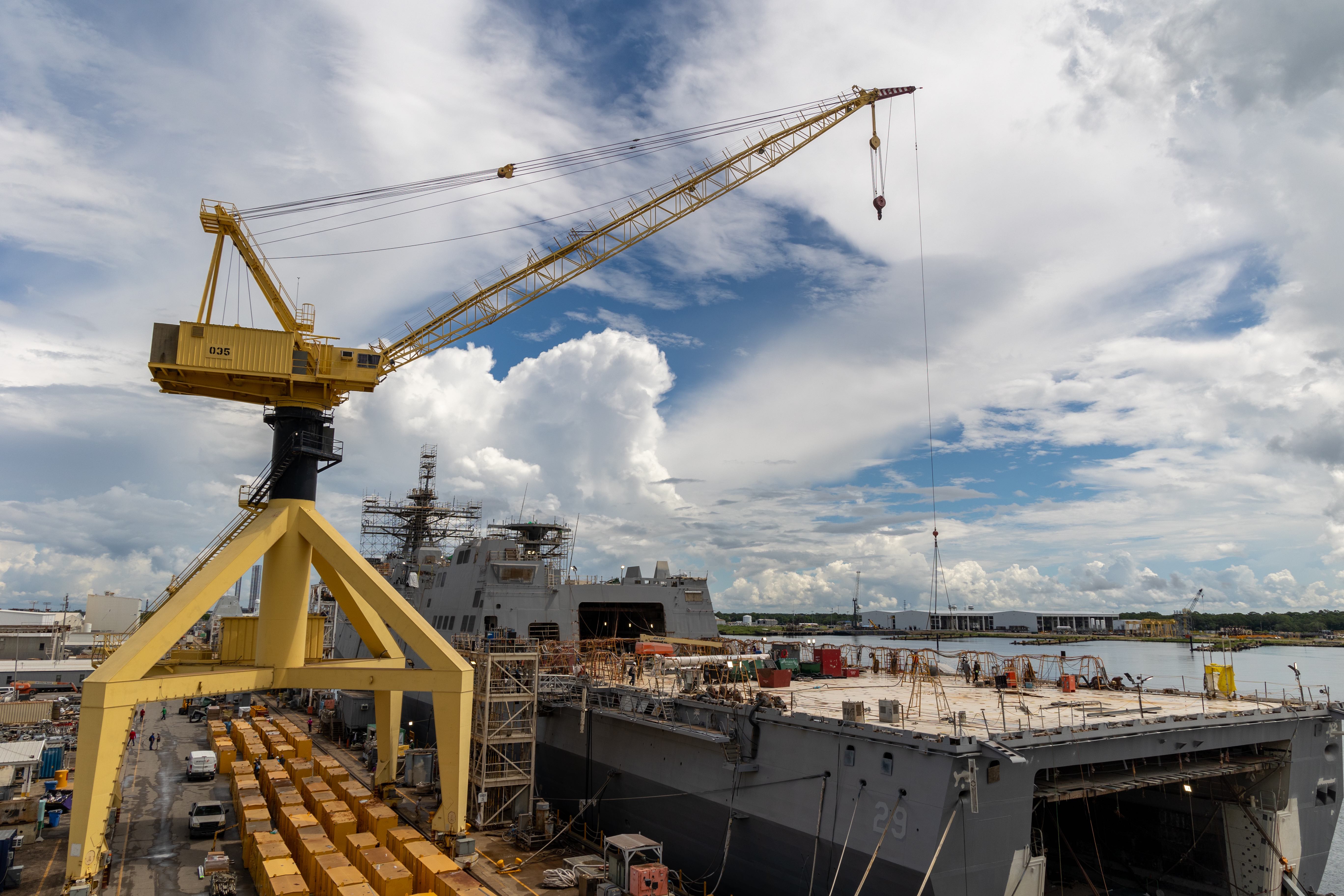
Two lawmakers overseeing the Navy are calling on the service’s secretary to deliver an overdue study about its amphibious fleet.
In a letter sent on Monday to Navy Secretary Carlos Del Toro, Sens. Tim Kaine (D-Va.) and Roger Wicker (R-Miss.) asked for an update on the amphibious ship requirements study.
“During your annual force posture hearing in May, we asked about the status of a study you commissioned to analyze the number of amphibious ships needed in our Navy fleet. You told us that the study would be released ‘in the next several weeks.’ It has now been over five months since that hearing, yet the results of the study still have not been provided to either of us,” the senators wrote to Del Toro.
“We strongly urge you to provide the unredacted, unedited results of the study without further delay. If the study is still incomplete, please provide a reason as to why it is incomplete, whether you need any additional resources to complete the study, and when you expect it to be completed, as well as the results upon completion,” they continued.
The Navy did not respond to a request for comment when asked about the letter and the status of the study.
Marine Corps officials have maintained that the Navy needs a minimum of 31 large amphibious ships – 10 big-deck LHAs and 21 LSDs or LPDs – to meet its missions. In mid-February, Marine Corps Commandant Gen. David Berger told reporters that the service was 30 to 45 days away from finishing the study that would ultimately go to Del Toro.
“If it’s anything like the previous studies – we’ve had I think 12 studies in the last 13 years – every one of them came out about 31 amphib ships,” Berger said at the time. “So I don’t know what this one will come to, but I can’t see it radically different from that. That’s requirements. That’s our Marine Corps requirement. That’s maybe different from what the nation can afford.”
The analysis is meant to assess both the requirements for large amphibious ships and the Light Amphibious Warship, a smaller ship the Marine Corps wants to shuttler smaller units of Marines around islands in the Pacific.
“Amphibious warships are a crucial element of our fleet forces in the Pacific, as they bring unique sea-to-shore capabilities to the fight. Failure to provide and maintain a credible naval deterrent today could mean global catastrophe tomorrow,” Kaine and Wicker wrote in the letter.
Over the last year, the Navy and the Marine Corps have been on different pages when it comes to the amphibious fleet. In the Fiscal Year 2023 budget rollout, the Navy planned to end the LPD-17 Flight II line after buying LPD-32. Marine Corps officials sounded the alarm over the decision, with Berger placing LPD-33 at the top of his annual unfunded priorities list. While the amphibious ships are crucial for the Marine Corps missions, the funding to buy them comes out of the Navy’s shipbuilding budget.
The Marine Corps’ concerns over the LPD line ending – in addition to the Navy’s proposal to decommission four Whidbey Island-class dock landing ships – led both House and Senate authorizers to include language in their versions of the FY 2023 policy bill mandating the Navy have a minimum of 31 large amphibious ships.





